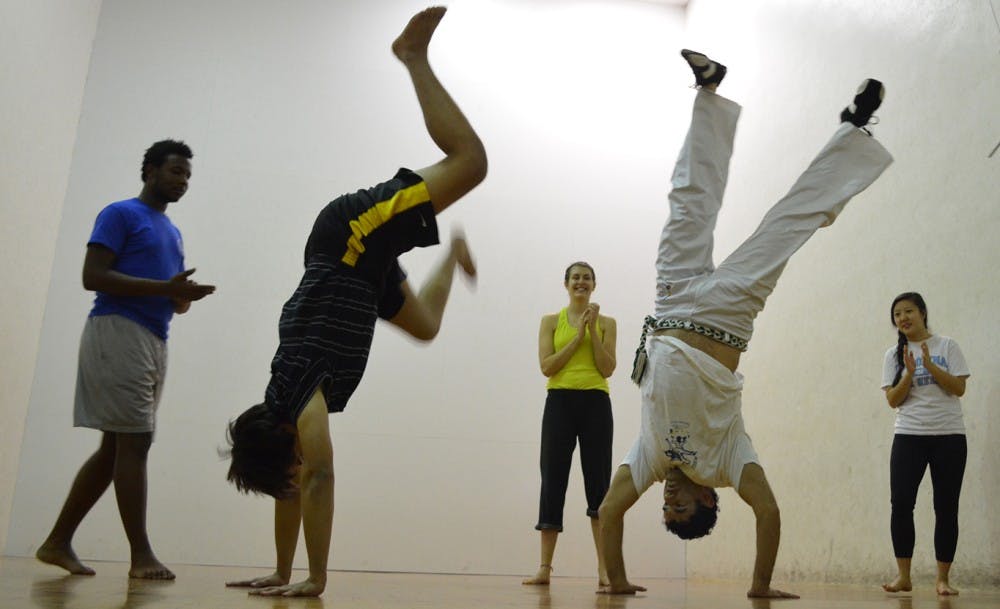On a beach in Brazil in the summer of 1984, Frederico Castelloes was swapping martial arts moves with a friend when he was first introduced to capoeira, a martial art that incorporates music and dancing.
Fast forward almost 20 years, and Castelloes, a lecturer in Portuguese at UNC, is now the adviser for the Carolina Capoeira Club.
Jay Raleigh, a junior and one of the founding members of the club, said he first became interested in capoeira in high school.
“I always wanted to try martial art, but this was the only one that incorporated music,” he said.
Raleigh said singing and instruments are incorporated into the practice. The players vary their speed and style of movements based on the sound of the berimbau, an instrument used to set the rhythm.
After coming to UNC, he and a friend started the club in the spring of 2012. Today the club has somewhere between five and 10 regular members that meet two to three times a week. The meetings consist of capoeira lessons taught by Raleigh or Castelloes.
Sophomore Saideep Gona joined the club last semester without any previous capoeira experience and said he has come to love the practice.
Castelloes said the martial art form was developed by African slaves in Brazil in the early 1600s, but its influences in African tribal song and dance date back even further.
“Capoeira is truly a combination of gymnastics, dance and martial arts,” he said.



